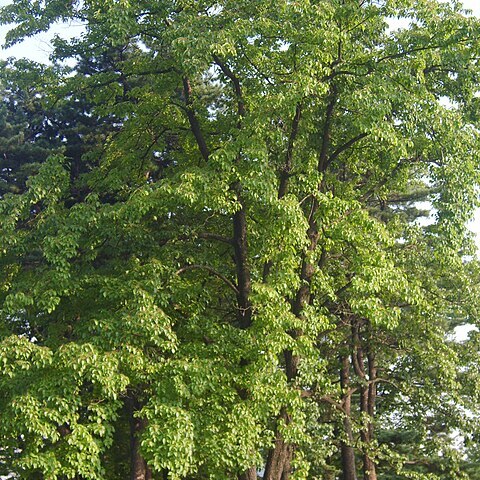Trees 6–15 m tall. Bark dark gray, rectangularly splitting. Young branches green, ± 4-angled, densely pubescent with grayish white short trichomes; old branches yellow-green, glabrous. Leaves opposite; petiole (0.8–)3.5 cm; leaf blade light green abaxially, narrowly elliptic to broadly ovate, 4–12(–15) × 1.7–5.5(–8) cm, papery, abaxially with grayish white short appressed trichomes, scabrous, veins 4(or 5), small veins inconspicuously reticulate, base cuneate, rarely rounded or cordate, often oblique, apex shortly to long acuminate. Corymbose cymes dense, 7–9 cm wide, with short white trichomes. Pedicels 0.8–2.7 mm. Flowers fragrant, white, ca. 9.5 mm in diam. Calyx lobes triangular, ca. 0.4 mm, equal to disk. Petals oblong-lanceolate, 4.5–6 × 1.2–1.5 mm. Stamens 4.8–5 mm, equal to or longer than petals; anthers light yellow, rarely rosy red, oblong-ovoid. Style clavate, ca. 3.5 mm; stigma capitate, not broader than style. Fruit black, globose, 6–7(–8) mm in diam.; stones compressed globose, ca. 5 × 4 mm, inconspicuously ribbed. Fl. May–Jun, fr. Aug–Oct.
More
A tree that loses its leaves. It grows 6-14 m high. The bark is dark grey and splits in long strips. The leaves are opposite and narrowly oval. They are 4-10 cm long by 3-5 cm wide. They taper to the tip. They are softly hair on both surfaces. The flowers are white and 1.2 cm across. They are in groups at the ends of branches. The fruit are fleshy and black. They are 6 mm across.


